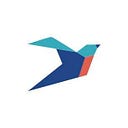Yes, You Really Are Creative
By: Tamar Lechter
Every once in a while, I like to sit back and revisit conversations I’ve had with clients. I think about connections between themes that come up, and contemplate how those conversations have added to my own growth and insight into human beings.
Recently, I devoted some time to this kind of “client inventory,” and landed on the theme of creativity. It amazes me how often this theme comes up. Sometimes, the theme lands front-and-center, with a client who describes themselves as creative and is looking for ways to make more room for their creative side, devote more space to unleashing their creativity, or use it as a way to reach others. More commonly, I find that clients complain that they are not creative, or that they wish they were able to bring creativity into their work.
Over time, I’ve learned to question this idea of creativity. What is it? How do you know if you have it? If you are thinking of the dictionary’s definition, then it is, “The use of the imagination or original ideas, especially in the production of an artistic work.” Personally, I wish that they had omitted the last part referencing artistic work. I think this is where people get tripped up. If they haven’t produced a watercolor, written a poem, or modeled clay into a life form, they cross creativity off their list of strengths.
[Related: Do You Feel Stuck? How Taking Risks Helped me Feel More Fulfilled]
A client told me recently that he felt lost among younger “creative types” in his office who knew graphic design, could come up with new ideas on the spot, and always seemed to be bursting with suggestions. Once we started digging deeper, we realized that many of these “creative type” colleagues were amazing idea generators, but were often lost on how to implement those ideas. That’s where my client would come in. His ability to see connections and understand how to get from idea to finished product was his greatest strength. He was able to creatively manipulate budgets in order to accomplish more projects for less money. He was able to creatively connect separate ideas into one project, utilizing the best of each colleague’s inputs, while streamlining processes and saving money. He was able to creatively shift personnel onto different projects to bring out the best in each team member and maximize results. He resisted calling this creativity at first, but soon began bringing me stories of his creative abilities to solve problems and move ideas forward. It was eye-opening for him and brought a new level of confidence to his work.
If we focus on the first part of the definition of creativity, “The use of the imagination or original ideas,” then we understand that creativity is the ability to see that which others cannot. The real question is not, “Am I creative?” but rather, “Which position, activity, or role best allows me to see what others cannot?” With this question as a guide, clients have been able to identify areas in which their creativity has shone and led to great workplace innovations. That same client identified that his greatest source of creativity was in establishing teams and seeing strengths and weaknesses in collaboration where others could not. This led to putting people together who may not have seemed like obvious fits, but ended up being powerful collaborators. He was building something new. Something no one had envisioned. He was being creative.
[Related: Innovation Defined: 3 Keys to Future Proofing Your Business]
The painter Henri Matisse said, “Creativity takes courage.” Indeed, it is one thing to see what others do not, and yet another thing to step into that vision and take action. Creativity requires a certain amount of risk. By definition, it is about attempting something new and changing the status quo. To do this, one must believe in what they see and be able to get others to buy into it. Once a person has identified that they are, in fact, creative, and that they have something new to offer, they must have the confidence to act upon that realization.
Personally, I have been able to find that confidence in myself and support clients in finding confidence in their creativity by asking a few simple questions:
- What have I seen/imagined/discovered/created that is new? How is it new?
- Why does it matter? Who does it matter to?
- What do we lose if we do nothing? What opportunities do we miss out on?
- What can we gain by this? How will it change the team/project/organization?
Look for creativity in yourself every day. Where are you able to shine light where others only see darkness? What do you understand intrinsically that others might not? What is obvious to you that others miss? Creativity lives in those places. You may not ever write a sonata or choreograph a ballet, but what you see and imagine is the creativity you bring to the table. Be bold enough to act upon it, and there is no limit to where it can take you. As Maya Angelou said, “You can’t use up creativity. The more you use, the more you have.”
[Related: How to Create a Free Flow of Information Between Leaders and Employees]
—
Tamar Lechter is a professional leadership coach.
Originally published at www.ellevatenetwork.com.
